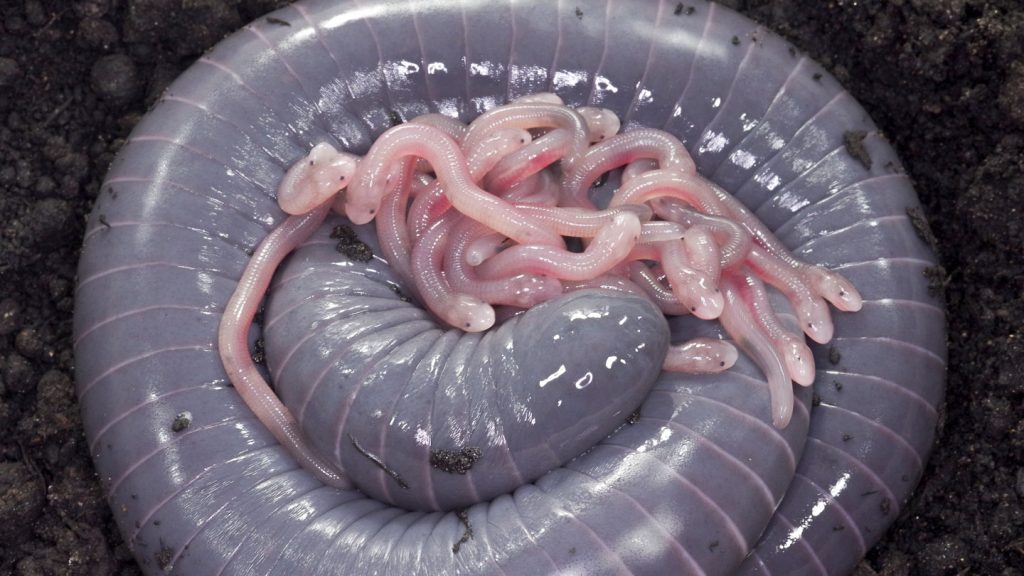The discovery of ringed caecilians feeding their hatchlings a kind of milk secreted by glands in the mother’s oviduct is an incredibly rare and unusual behavior for egg-laying amphibians. This finding challenges previous assumptions about the diversity of parental care in animals and underscores the complexity of evolution across different species. Scientists have observed the hatchlings of ringed caecilians gathering around their mother’s vent to feed on this nutritious fluid, the composition of which closely resembles that of mammalian milk. The mother’s milk-like substance enables the hatchlings to grow rapidly and gain weight despite not leaving her side.
Caecilians, which are legless, burrowing amphibians, exhibit a range of distinctive biological traits beyond this newfound milk-feeding behavior. Some species of caecilians possess poisonous slime, may be venomous, and even have been observed feeding their own skin to their young. Researchers have studied these enigmatic animals for years, noting the unique features that make them stand out among amphibians. The presence of this milk-like feeding behavior among caecilians adds yet another layer of intrigue to these elusive creatures.
The methodology employed by scientists to study the ringed caecilians’ milk-feeding behavior involved recording interactions between mother and hatchlings, as well as analyzing the anatomical structure and composition of the milk-like fluid. By conducting close observations in a lab setting and gathering over 240 hours of video footage, researchers were able to document the feeding process and learn more about how this unusual form of parental care works among these amphibians.
The nutritional and biochemical analysis of the milk-like fluid produced by the female caecilians revealed its rich fat content, similar to mammal milk. This highly nutritious resource likely plays a crucial role in supporting the rapid growth and development of the hatchlings. Researchers have also raised questions about the potential impact of milk production on the mother caecilian and areas for further study, such as sibling competition for milk access and the long-term effects of milk production on the mother’s health.
The similarities observed between egg-laying and live-bearing caecilian species in terms of their milk-feeding behaviors suggest a potential evolutionary link between the two reproductive strategies. The findings raise intriguing questions about the origins of milk production in caecilians and the broader significance of this phenomenon in the animal kingdom. As researchers continue to uncover new insights into caecilian biology and behavior, the complex nature of these enigmatic creatures becomes increasingly apparent, highlighting the need for further research in this field to unlock the mysteries of their evolutionary history and ecological significance.


